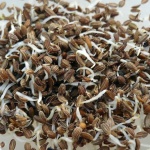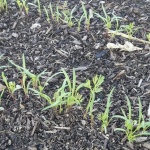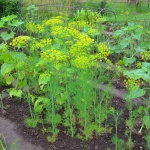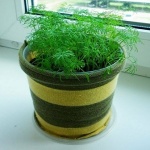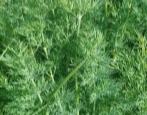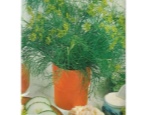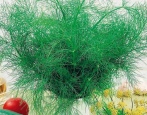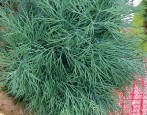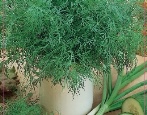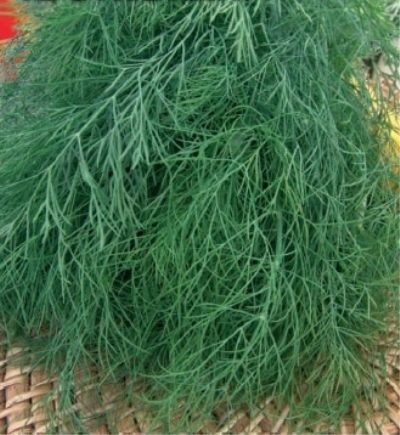
- Authors: Kononov A.N.
- Year of approval: 2002
- Leaf rosette: raised
- Socket height, cm: 30-40
- Ripening terms: mid-season
- The period from germination to biological ripeness (harvesting with spices): 79 days
- Foliage: strong
- Leaf size: large
- Leaf color: dark green, with a slight waxy bloom
- Dissection of leaves: medium
Among the vegetable crops, which are very useful and indispensable for the preparation of fresh salads, dill occupies a special place. Even an inexperienced vegetable grower can grow it on a garden ridge. One of the most popular is the mid-season Bushy variety, capable of adapting to almost any climatic conditions.
Breeding history
This species is relatively new, since it was bred in 2000 by breeders of the agricultural firm "Association Biotechnics". The authorship belongs to the famous scientist Kononov A.N. Culture in 2002 joined the ranks of the State Register of Breeding Achievements of the Russian Federation. Dill is cultivated on small garden estates, as well as on farm fields and lands. Due to its resistance to stress and quick adaptation, dill can grow productively in any climatic zone.
Description of the variety
Bushy dill is a representative of a group of abundantly leafy type. The plant is characterized by a raised rosette of leaves, reaching a height of 30-40 cm. The plant has abundant leafiness - from 10 to 12 leaves, evenly covered with a dark green color with a barely noticeable waxy bloom. Strong thickening is due to the fact that the internodes are very close together. The edges of the foliage are moderately dissected.
Characteristics of the appearance of the plant
The dill grows quite powerful - the height of the bush reaches 150-180 cm. During the flowering period, the central peduncle stands out, since it is slightly larger than the others. The plant reaches its maximum growth during the flowering period. The umbrella of dill is medium-sized, with evenly distributed rays.
The weight of one specimen when harvested for greens reaches 10-12 grams, and when grown on spices - 18-20 grams. Cut dill perfectly tolerates transportation, and also retains its freshness and attractive presentation for a long time. It is recommended to store greens in vacuum bags or in cling film on the bottom shelf of the refrigerator.
Purpose and taste
Dill has excellent taste properties. The leaves have high juiciness, softness, tenderness and excellent aroma. The richness of the aroma is due to the high content of essential oils in the composition. In addition, the greens give off a refreshing aroma and add a touch of piquancy to the salads.
Cut greens are added to cold dishes, soups, and also dried, frozen, used for canning. Aromatic spices are prepared from the seeds.
Ripening terms
This variety represents a category of mid-season dill varieties. From the mass appearance of sprouts to the technical ripeness of the culture, 40 days pass (to obtain fragrant greens). To prepare seeds for spices, it will take more time to grow - 79-80 days. Harvesting can be done over a long period - from May to September.
Yield
This variety has good yields, but this requires favorable weather conditions and basic care. From 1 m2 of planting on greens, you can cut 2-2.2 kg of dill. The average yield for spices is slightly higher - 2.57 kg. You can cut the leaves in stages.The maximum yield was recorded at around 3.5 kg of dill with spices.
Growing and care
Dill is cultivated through direct sowing of seeds into the ground. The most favorable temperature regime for the growth of dill is + 16-18 degrees. Seeds can be sown from the last week of April to mid-July. The seeds are buried in the ground by 2 cm, no more. The optimal sowing pattern is 20x5 cm.
The beds where the dill will be sown are pre-fed with superphosphates and manure, and are also abundantly moistened. You can increase the yield by sowing dill several times per season and observing the interval between procedures of 10-14 days. It is not recommended to grow dill on ridges where celery was the predecessor. A characteristic feature of the variety is the ability to self-seed.
Caring for a herbaceous crop consists of simple procedures: thinning plantings, loosening row spacings and cleaning weeds, daily watering in extreme heat (standard dill is watered every 2-3 days), prevention of viruses and insect infestations. In case of possible night frosts, cover with plastic wrap will be required. It is recommended to feed the plant with potash fertilizers.
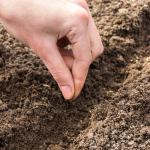
Dill cultivation is available in any conditions: open and closed ground, on a balcony or windowsill. Before planting dill, you need to carry out pre-sowing seed treatment, correctly determine the timing, prepare the beds.
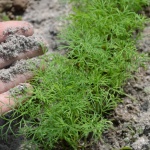
Soil requirements
Dill grows comfortably in loose, light, nutritious, air and moisture permeable soils. It is important that the soil is not sour, waterlogged. Light loamy, sandy loam, cultivated and slightly acidic soils are optimal for growing dill.
Required climatic conditions
For planting dill, a leveled clean area is selected, where there is a lot of sun and light throughout the day. Despite its good stress resistance, the plant is susceptible to sudden cold snaps and prolonged shade.
Disease and pest resistance
High immunity provides resistance to a number of diseases: powdery mildew, fusarium wilting. Preventive spraying is not carried out, therefore, seed treatment is required before sowing.
